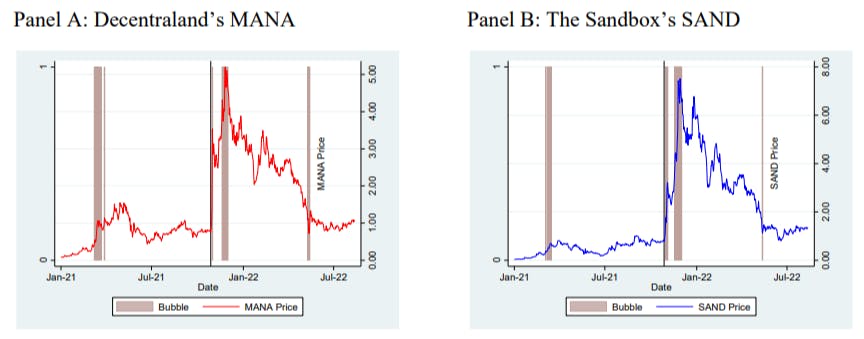If you earned crypto for the first time ever during the mid-2010’s, chances are you made that money creating posts on Steemit.
For many Nigerians and Africans, crypto publishing apps like Steemit and Publish0x provided the gateway to access crypto. Users made money by writing micro-blogs, grew their engagement and following, and earned money from being top contributors on the platforms.
Platforms like Steemit and the much-changed Publish0x were social finance (“SocialFi” in Web3 lingo) apps that allowed users to monetise interactive activities. It was like using Facebook or Reddit, but in a way that you were paid for simply being online.
At its peak between 2017 and 2018, Steemit had over 100,000 Nigerian users on its platform; in Africa, the number was slightly more. The SocialFi app claimed micro-bloggers could earn up to $2.11 for a day’s work.
Nigerian users took it seriously. Influencers on the platform and community leaders hosted physical meet-ups in cities like Lagos, Ibadan, Kaduna, Uyo, and Port Harcourt to teach others how to use the app. They formed local support groups to help newcomers sign up, learn the basics, and grow their earnings.
All that hype from several years ago has now died down. Users, impatient with Steemit’s reward system, began leaving the platform. In recent times, there’s been little sign of platform upgrades or efforts to fix ongoing issues.
Steemit and crypto’s early adoption
Founded in 2016 by Ned Scott and Dan Larimer, Steemit was built as a social media platform on the Steem blockchain, owned by the same company. The Steem blockchain also has its digital token, $STEEM, currently priced at $0.1430. Outside of the Steemit platform, people hardly used $STEEM.
People created posts—educational, inspirational, topical, or anything else—and earned money when others “upvoted” them. The more upvotes (similar to “likes” on Facebook or Instagram) your posts received, the more money you made—usually a few $STEEM tokens. During payout days, creators could then transfer their earnings from their Steemit wallet, a built-in custodial wallet, to other crypto wallets like Trust Wallet.
This was before crypto exchanges such as Quidax, Busha, Luno, and the likes exploded in popularity. So, to get other mainstream crypto coins like Bitcoin or Ether, Steemit bloggers had to explore informal peer-to-peer (P2P) channels like WhatsApp groups, to find whom to exchange their $STEEM tokens with. In the same vein, they could also exchange $STEEM for fiat currencies like US dollars or Naira.
Steemit had a feature called “Steem Power”—a locked-up version of the token that gave users more voting power. If you had more of it, your upvotes carried more weight and could help creators earn more. This meant that the people with the most Steem Power had a lot of influence on who got rewarded.
Steemit also rewarded people for curating content. This means if you upvoted good content early enough, you earned a part of the payout too. Users also earned through comments, especially if their replies added value to a post or conversation. The more helpful your activity on the platform, the more likely you were to earn something from it.
The platform ran a built-in reward cycle that took about seven days. So every post had about a week to gather engagement before it was evaluated for payout. All of this was tracked publicly on the blockchain, so people could always check the numbers for themselves.
Crackdown on engagement farming
However, the kryptonite of most creator-centric platforms is human wisdom—and how far people are willing to go with that wisdom. As you may already suspect, Steemit users saw a way to game the system. They would cluster themselves in small groups, called “pods”, on Telegram or WhatsApp, and engage with one another’s posts.
This made it easy to cheat the system. People would just upvote their friends’ posts to help them earn more. Over time, this led to poor-quality content rising to the top. The platform tried to stop it with “downvotes,” a way for users to call out low-value and spam posts. Creators caught doing this forfeited a significant portion of their earnings.
In 2019, Steemit broadened its community rules in a further bid to curtail low-value posts. Afterward, it also started taking action against users who used AI tools to generate content, especially when it was obvious the content lacked originality or context.
To tackle the pod problem, Steemit introduced a reputation system, rating users on a scale of 1 to 100. The more your reputation grew through valuable posts and comments, the more weight your upvotes and downvotes carried. If a user with a high reputation upvoted your content, you earned more money than if someone with a low reputation did. This discouraged people from creating fake accounts or relying on new users to game the system.
But these strict measures came with a price. As the rules became more rigid, some users felt discouraged. Many of them began migrating to Publish0x, which launched in 2019, and others moved to Hive, a spin-off platform, in hopes of increasing their earnings.
Publish0x started as a social media and microblogging platform. Today, Publish0x partners with survey providers to allow eligible users, depending on their location and interests, to take part in surveys and earn credits. These credits can then be swapped for real money. Though still active, user activity appears to have dropped over time.
Powering crypto adoption in emerging markets
Steemit claims it has now crossed over 1 million users, and that 14.4% of them, as of June 2025, are Nigerians. Around the world, 63.8% of its users are from emerging economies like Indonesia, Bangladesh, Nigeria, Pakistan, and Thailand.
The company also says it paid out $59.6 million to creators in June 2025 alone and records over 1 million transactions every 24 hours on its blockchain, pointing to high demand and usage.
According to Semrush, a content marketing platform, Steemit’s website had about 2.2 million visits in June. Online traffic tracker, Similarweb, says 67% of those visitors are men, while 33% are women.
While there may now be over 140,000 Nigerian users on Steemit, a generous estimate will put active daily users—people who use Steemit app daily—in the low thousands. Many Steemit communities have gone quiet, and several of the influencers who helped popularise the platform in Nigeria have since left.
Yet, some Nigerians, still active on Steemit, have managed to cash out over $10,000 from their lifetime activity on the app. For example, Joseph (@josepha), a Nigerian Steemit user who was active 6 hours ago, has earned $7,214.42 overtime; $165.72 in the last month, and $35.26 in the last week. was able to verify this on Steemit’s publicly accessible records domain.
Ruth Joe (@ruthjoe), another influential user, has earned $4,076.75, while Ngoenyi (@ngoenyi), another influencer with 2,286 followers, has made over $12,500 in lifetime rewards.
Steemit’s engine is now sputtering, but it hasn’t hit the brakes yet. Devoted fans are still making money from the SocialFi app, often replacing it as their main hustle, or a side income.
Mark your calendars! Moonshot by is back in Lagos on October 15–16! Join Africa’s top founders, creatives & tech leaders for 2 days of keynotes, mixers & future-forward ideas. Early bird tickets now 20% off—don’t snooze! moonshot..com












